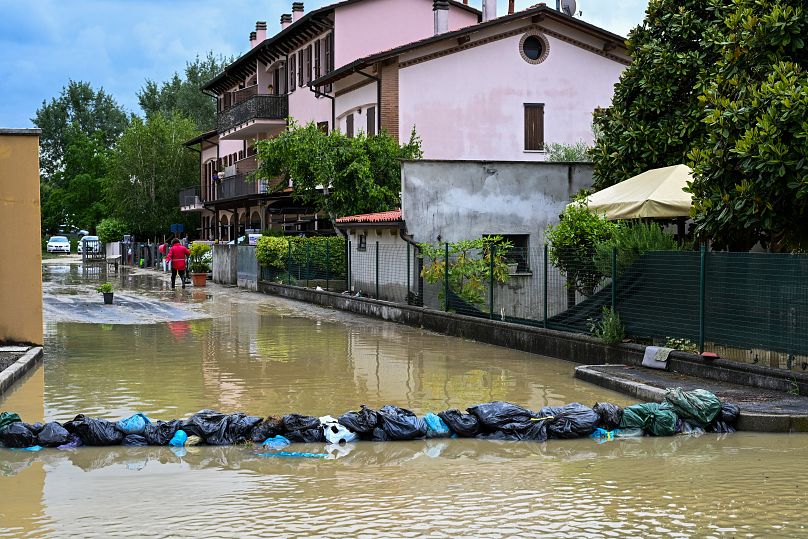Rainfall and burst rivers have devastated the region of Emilia Romagna.
The region of Emilia Romagna in northern Italy has been devastated by floods which killed 14 people. 36,000 residents had to evacuate and 23,000 of these have still not been able to return to their homes.
Last week, 6 months' worth of rain fell in 36 hours in the wealthy region of Emilia Romagna. Many rivers burst their banks, submerging entire towns and making some villages and hamlets entirely inaccessible.
The Italian government has announced €2 billion in aid, with some of it going to farmers and business owners in one of the country's most productive regions.
The government may raise the price of tickets for state museums by €1 to help raise funds. The money would be earmarked to help pay for repairs to damaged cultural institutions. They are also considering is a special lottery game to add to the pot.
If you have travel plans to northern Italy, here’s what you need to know.
Flights to Bologna are running as normal
Bologna Airport has been unaffected throughout the emergency. Flights are arriving and departing as scheduled.
High Speed, InterCity and regional trains are running as normal in the Emilia-Romagna region.
Holidaymakers last week criticised airlines for continuing to run flights to the region, without the option of a refund.
“British Airways are refusing to refund £1518 (€1,747) paid for flights to Bologna today. At least 8 people dead and 13,000 evacuated from the area due to flooding but we’re still expected to travel there for a holiday. Thoughts with everyone suffering in the region,” one British man tweeted this morning.
“[I] bought tickets to Bologna months ago for tomorrow morning. It's very expensive for my country since we don't use [the] euro. And now there are floods everywhere [and I don’t know if it's safe to travel,” another Twitter user wrote.
Euronews Travel has contacted British Airways for comment.
Can tourists still visit Bologna and Ravenna?
Bologna tourist board assures visitors that the city of Bologna is unaffected and open to visitors.
Tourist attractions are open as normal, along with businesses in the historic centre- a webcam is available here.
They advise tourists to avoid the Bolognese hills and its surrounding areas due to landslides.
The popular tourist city of Ravenna, famed for its Byzantine-era mosaics, was particularly badly affected by the floods. More than 27,000 people were evacuated from their homes and drinking water and food was in short supply in some areas.
“Ravenna is unrecognisable after the damage it has suffered,” Mayor Michele de Pascale told RAI public radio.
However life is slowly beginning to return to normal. Schools in Ravenna reopened yesterday, although high schools in nearby Forli remained closed until Wednesday due to continuing disruption on roads.
Tuscany, Rome, Naples: Are other parts of Italy affected by the floods?
Although there has been unusually high rainfall across Italy, Emilia Romagna bore the brunt of the storms.
Other popular tourist destinations like Rome, Tuscany and Venice are unaffected.
How can you help those affected by the floods?
As one of the world's most popular tourist destinations, many travellers hold Italy close to their hearts.
If you would like to show your support for the affected regions, Emilia Romagna’s Civil Protection Agency has set fundraising campaign for “people and communities hit by the flooding”.
The details (IBAN and BIC codes) of the bank account associated with the campaign are available here.
All donors are advised to include “Alluvione Emilia-Romagna” (“Emilia Romagna flooding”) as the reason for their donation. All funds and their use will be made public by regional authorities.
The Italian Red Cross, one of the first organisations to offer assistance on the ground, also has a donation campaign you can support here.












